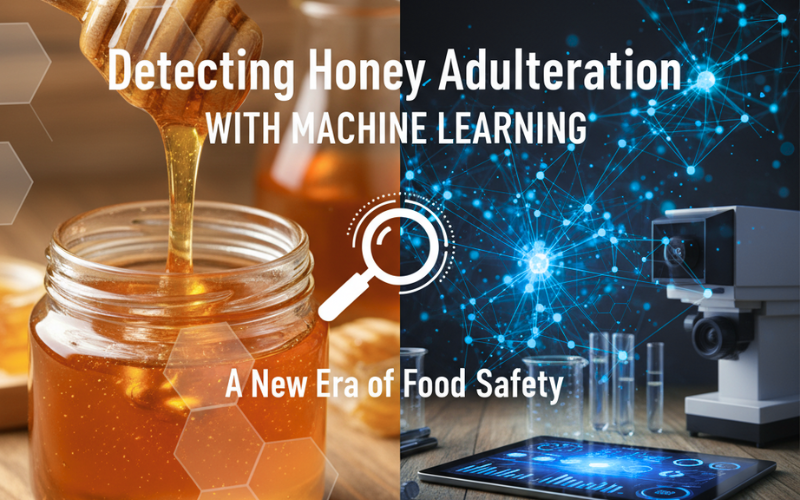- Tokyo: 21:37
- Singapore: 20:37
- Dubai: 16:37
- London: 12:37
- New York: 07:37
Detecting Honey Adulteration with Machine Learning: A New Era of Food Safety

Honey has always been celebrated as nature’s golden gift—valued for its taste, health benefits, and cultural significance. Unfortunately, its popularity also makes it one of the most frequently adulterated foods. From sugar syrups to artificial sweeteners, adulteration undermines consumer trust and threatens genuine producers. Traditional methods like pollen analysis or basic lab checks often fall short in spotting sophisticated fraud. But now, advanced technologies are changing the game.
A recent study by researchers at Wollo University, Ethiopia, shows how machine learning combined with hyperspectral imaging can detect honey adulteration with accuracy above 98%. This breakthrough holds tremendous promise for protecting consumers and maintaining integrity across the honey industry.
Why Honey Adulteration is a Growing Problem
Counterfeiters mix natural honey with cheaper sugars (like corn syrup or sucrose) to increase profits.
Adulteration not only reduces honey’s nutritional value but can also introduce harmful substances.
Rising global demand and limited authentic supply make honey an easy target for fraudulent practices.
Consumers increasingly demand proof of authenticity. For brands like Geohoney, ensuring transparency and purity is a necessity.
The New Approach: Machine Learning + Hyperspectral Imaging
The study introduces a cutting-edge method:
Hyperspectral imaging captures both visual and spectral information from honey samples. Each wavelength acts like a fingerprint, revealing subtle differences between pure and adulterated honey.
Machine learning algorithms (Artificial Neural Networks, Support Vector Machines, Random Forests, K-Nearest Neighbors, and Decision Trees) analyze these fingerprints to classify whether a sample is genuine.
Through hyperparameter tuning (fine-tuning the algorithm’s internal settings), accuracy levels reached nearly 99%.
Among the tested methods, Artificial Neural Networks (ANNs) performed the best, consistently identifying adulterated honey even at low levels of tampering (as little as 5–10%).
Key Findings of the Research
High accuracy: Over 98% classification accuracy across multiple honey types.
Robust detection: Worked well across different brands and botanical origins, including premium Manuka honey.
Scalability: The system can classify both “pure vs. adulterated” honey and different levels of adulteration (5%, 10%, 25%, 50%).
Future-proof: As datasets expand, this technology can evolve into a universal fraud detection system for global honey markets.
What This Means for the Honey Industry
Trust and Transparency: Advanced testing ensures customers receive genuine honey.
Quality Control: Importers, exporters, and regulators gain a reliable, non-destructive testing tool.
Brand Protection: Premium honey producers like Geohoney can safeguard their reputation and highlight authenticity as a competitive advantage.
Looking Ahead
Machine learning is no longer just a buzzword—it’s becoming a real-world solution for food safety. For honey, this means:
Better protection against counterfeit products.
Faster, more accurate quality assurance.
A pathway toward blockchain-backed traceability, where every jar of honey comes with scientific proof of purity.
At Geohoney, we believe technology and nature can work hand in hand. By embracing innovations like hyperspectral imaging and AI, the honey industry can ensure that consumers around the world continue to enjoy honey the way nature intended—pure, authentic, and unadulterated.





